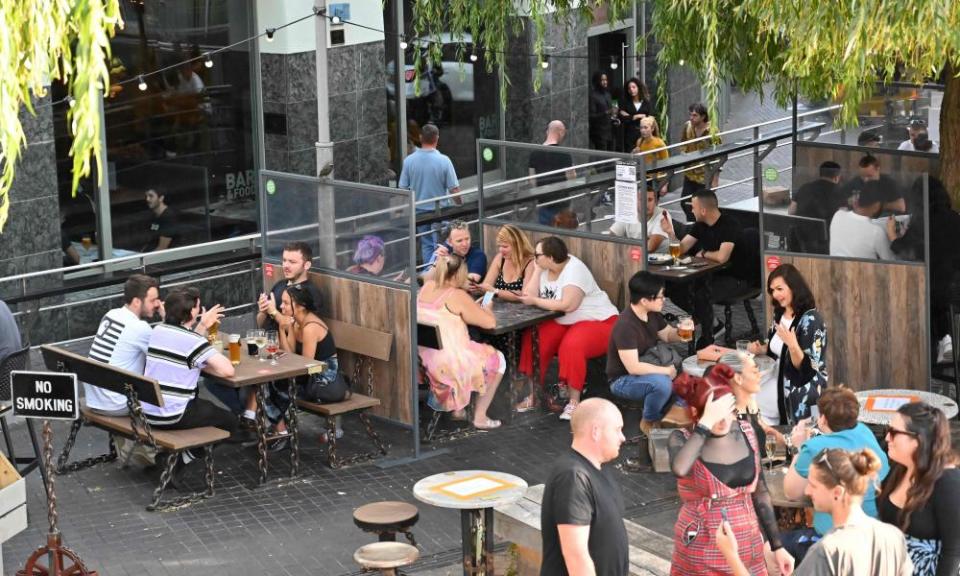PM considers imposing Covid 'circuit break' across England

Boris Johnson is considering imposing short-term nationwide restrictions across England, which could include closing pubs and restaurants, to create a “breathing space” in the battle against coronavirus.
Government sources confirmed that “active discussions” were under way in No 10 about how best to respond to a sharp increase in cases, which have been doubling every seven to eight days.
One option under consideration, which was among those discussed by the Scientific Advisory Group for Emergencies (Sage), is a short period, perhaps a fortnight, of England-wide rules.
Government sources denied this would amount to a second national lockdown, which the prime minister has repeatedly said he is keen to avoid, describing it as the “nuclear” option.
However, it would mark a dramatic escalation in the government’s fight against the virus, which ministers hoped could be kept under control using “whack-a-mole” local measures alone.
Johnson’s spokesman said: “We’ve always been clear that our strategy is to keep the virus down as much as possible while protecting education and the economy. We are prepared to take action that is necessary, but we obviously want to avoid any extended lockdown.”
Schools would be expected to remain open, after Johnson declared keeping children in the classroom a “national priority”, but hospitality venues could be asked to close, or to restrict opening hours.
Some reports had suggested this “circuit-breaker” which would fall short of a full lockdown, could coincide with autumn half-term in late October, to minimise disruption, but government sources said if it did take place, it would be likely to happen sooner. An announcement could come as early as next week.
The notion of a “circuit breaker” – or partial lockdown – was introduced in April in Singapore by the prime minister, Lee Hsien Loong. It saw schools and all but essential workplaces closed, as well as restrictions on restaurants and other public places.
The health secretary, Matt Hancock, told Sky News: “A national lockdown is the last line of defence and we want to use local action, and we want people to follow the rule of six, in order to avoid it.” But he said the government would “take the action necessary” to keep the public safe.
Ministers hope the “rule of six” limiting the size of social gatherings across England, will begin to have an impact on the rate of increase in cases – but have declined to rule out acting earlier.
Nicola Sturgeon tweeted on Thursday that the Scottish government “will be considering carefully if further measures are needed to stem the increase”.
Anxiety in Whitehall has been exacerbated by the shaky state of the testing system. The head of the NHS test-and-trace programme, Dido Harding, told MPs on Thursday demand for tests was outstripping supply by three to four times – and conceded the sharp increase as children returned to schools had not been anticipated.
Official figures showed 90% of tests were failing to hit the 24-hour turnaround target.
Hancock said: “This is a big moment for the country. We are seeing an acceleration in the number of cases. And we are also seeing that the number of people hospitalised with coronavirus is doubling every eight days. We are now starting to see the effects in hospital.
“The strategy is to keep the virus down as much as is possible whilst protecting education and the economy.
“And doing everything we possibly can for the cavalry that’s on the horizon of the vaccine and mass testing, and the treatments that, frankly, this country has done more than any other around the world to develop.”
The health secretary gave a robust defence of the testing system, promising to increase coronavirus testing to half a million a day, up from a quarter of a million currently, by the end of October.
And he insisted the surge in demand was understandable because the tests were free.
He said he was supporting the system “by getting more machines into the labs, we’re installing those as we speak. We’re hiring more people to run them because it is a logistical exercise as well as the scientific parts of it, just to get the samples into the right slots.”

